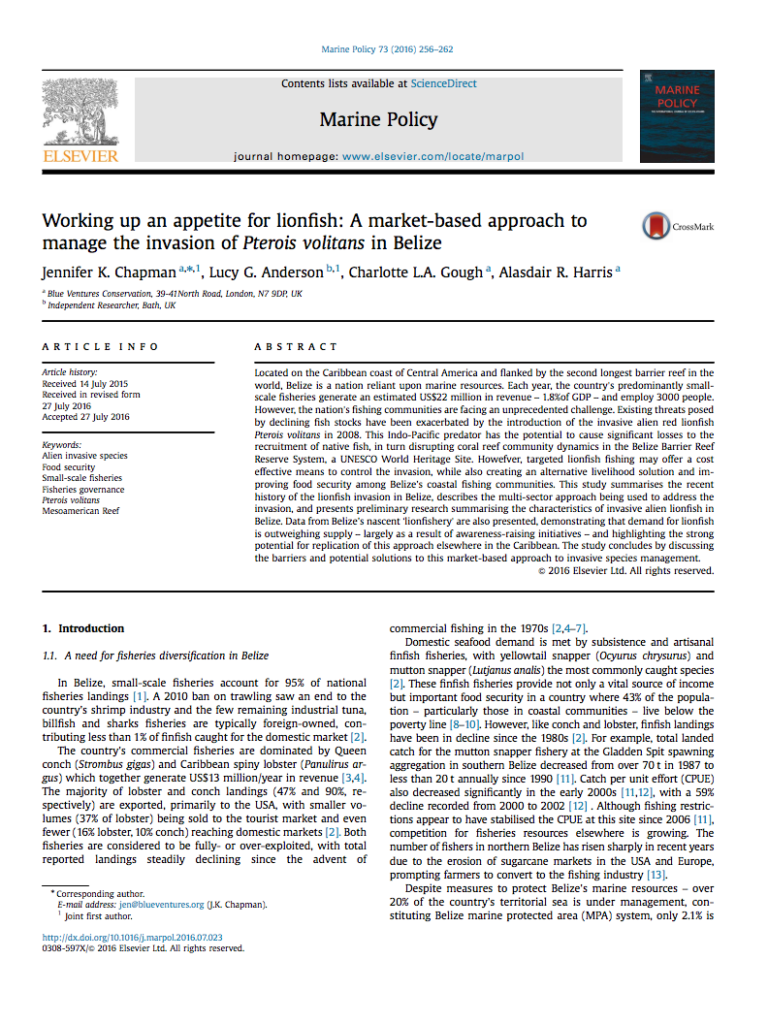Abstract
Located on the Caribbean coast of Central America and flanked by the second longest barrier reef in the world, Belize is a nation reliant upon marine resources. Each year, the country’s predominantly smallscale fisheries generate an estimated US$22 million in revenue – 1.8%of GDP – and employ 3000 people. However, the nation’s fishing communities are facing an unprecedented challenge. Existing threats posed by declining fish stocks have been exacerbated by the introduction of the invasive alien red lionfish Pterois volitans in 2008. This Indo-Pacific predator has the potential to cause significant losses to the recruitment of native fish, in turn disrupting coral reef community dynamics in the Belize Barrier Reef Reserve System, a UNESCO World Heritage Site. However, targeted lionfish fishing may offer a cost effective means to control the invasion, while also creating an alternative livelihood solution and improving food security among Belize’s coastal fishing communities. This study summarises the recent history of the lionfish invasion in Belize, describes the multi-sector approach being used to address the invasion, and presents preliminary research summarising the characteristics of invasive alien lionfish in Belize. Data from Belize’s nascent ‘lionfishery’ are also presented, demonstrating that demand for lionfish is outweighing supply – largely as a result of awareness-raising initiatives – and highlighting the strong potential for replication of this approach elsewhere in the Caribbean. The study concludes by discussing the barriers and potential solutions to this market-based approach to invasive species management.

















